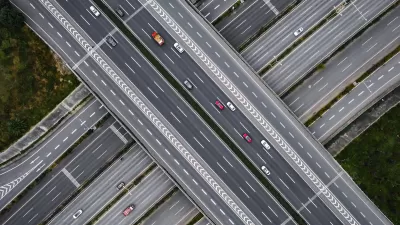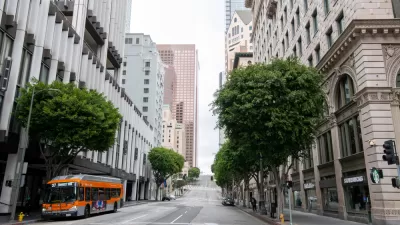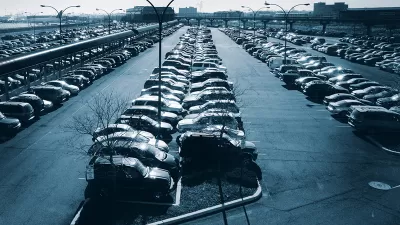While most of the world’s population doesn’t drive, cars have an outsized negative impact on public health, the environment, and land use.

A wide-ranging new analysis of “automobility” reveals the many ways that car-dependent design harms people and neighborhoods, writes Kea Wilson in Streetsblog USA. “Just taking into account car crashes and fatalities linked directly to car-related air pollution and lead exposure, automobility kills at least 1.67 million people around the world every year — a total of 60 to 80 million since the advent of the automobile.”
Beyond road deaths, the analysis shows how cars also contribute to pollution, worsening health, inefficient land use, and more. The analysis seeks to move away from a cost-benefit analysis that puts a price on human lives and environmental health and evaluates the broader harms that a car-centric culture causes. “From car crashes to pollution, virtually every item on this list disproportionately impacts socially and racially marginalized people — not least people who don’t drive, which the study authors point out constitutes ‘most people on the planet.’”
FULL STORY: All The Ways That Car Domination Harm Communities (Well, Almost All…)

Planetizen Federal Action Tracker
A weekly monitor of how Trump’s orders and actions are impacting planners and planning in America.

Restaurant Patios Were a Pandemic Win — Why Were They so Hard to Keep?
Social distancing requirements and changes in travel patterns prompted cities to pilot new uses for street and sidewalk space. Then it got complicated.

Map: Where Senate Republicans Want to Sell Your Public Lands
For public land advocates, the Senate Republicans’ proposal to sell millions of acres of public land in the West is “the biggest fight of their careers.”

Maui's Vacation Rental Debate Turns Ugly
Verbal attacks, misinformation campaigns and fistfights plague a high-stakes debate to convert thousands of vacation rentals into long-term housing.

San Francisco Suspends Traffic Calming Amidst Record Deaths
Citing “a challenging fiscal landscape,” the city will cease the program on the heels of 42 traffic deaths, including 24 pedestrians.

California Homeless Arrests, Citations Spike After Ruling
An investigation reveals that anti-homeless actions increased up to 500% after Grants Pass v. Johnson — even in cities claiming no policy change.
Urban Design for Planners 1: Software Tools
This six-course series explores essential urban design concepts using open source software and equips planners with the tools they need to participate fully in the urban design process.
Planning for Universal Design
Learn the tools for implementing Universal Design in planning regulations.
Heyer Gruel & Associates PA
JM Goldson LLC
Custer County Colorado
City of Camden Redevelopment Agency
City of Astoria
Transportation Research & Education Center (TREC) at Portland State University
Camden Redevelopment Agency
City of Claremont
Municipality of Princeton (NJ)





























